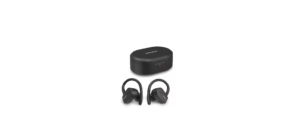Philips SCF334 Double Electric Breast Pump User Manual

Overview

Introduction
Congratulations on your purchase and welcome to Philips AVENT! To fully benefit from the support that Philips AVENT offers, register your product at www.philips.com/welcome. The Philips AVENT breast pump has a unique design that enables you to sit in a more comfortable position while expressing. The soft massage cushion* is designed to feel soft and warm and imitates your baby’s sipping action to provide fast milk flow – comfortably and gently.
The breast pump starts in a gentle mode that helps to stimulate your milk flow. You can then choose from three suction modes, according to your own personal comfort. The pump is easy to assemble and operate and all parts that come into contact with breast milk are dishwasher-safe. Healthcare professionals say that breast milk is the best nutrition for babies during the first year, combined with solid food after the first 6 months. Your breast milk is specially adapted to your baby’s needs and contains antibodies that help protect your baby against infection and allergies.
A breast pump can help you to breastfeed longer. You can express and store your milk so that your baby can still enjoy the benefits of it, even if you cannot be there to provide it yourself. As the pump is compact and discrete to use, you can take it with you anywhere, allowing you to express milk at your own convenience and maintain your milk supply. *The cushion included with this pump was designed to comfortably fit the majority of mothers. However, should you need it, you can buy a cushion for larger nipples separately.
General description (Fig. 1)
- Motor unit with silicone tube and cap*
- Silicone diaphragm*
- Pump body*
- Massage cushion*
- Cover*
- Battery housing (SCF332 only)
- On/off button
- Stimulation button
- Low suction button
- Medium suction button
- Deep suction button
- Adapter
- White valve*
- Philips AVENT Natural bottle*
- Cap*
- Screw ring*
- Teat*
- Sealing disc*
*Note:
Model SCF334 comes with two pieces of marked parts, except for the motor unit.
Important
Read this user manual carefully before you use the breast pump and save it for future reference.
Warning
- Always unplug the breast pump immediately after use.
- This appliance can be used by children aged 8 years and above and persons with reduced physical, sensory, or mental capabilities or lack of experience and knowledge if they have been given supervision or instruction concerning the use of the appliance in a safe way and if they understand the hazards involved. Children shall not play with the appliance. Cleaning and user maintenance shall not be done by children without supervision.
- Do not allow children or pets to play with the motor unit, the adapter, or accessories, as these parts may pose a choking or strangulation danger.
- Inspect the breast pump, including the adapter, for signs of damage before each use. Do not use the breast pump if the adapter or plug is damaged, if it does not work properly, if it is damaged, or if it has been dropped or submerged in water. – Do not use the breast pump outdoors, where aerosol spray products are used or where oxygen is administered.
- The breast pump is not suitable for use in the presence of flammable anesthetic mixtures with air or with oxygen or nitrous oxide.
- There are no user-serviceable parts inside the motor unit of the breast pump. Do not attempt to open, service, or repair the breast pump yourself. If you do, your guarantee becomes invalid.
Preparing for use
The motor unit, the silicone tube and cap, and the adapter do not require cleaning and sterilizing, as they do not come into contact with breast milk. Clean and sterilize all other parts of the breast pump before first use as described in chapter ‘Cleaning and sterilizing’. Also, clean these parts after each subsequent use and sterilize them before each subsequent use.
Assembling the breast pump
Note: Make sure you have cleaned and sterilized the appropriate parts of the breast pump. Wash your hands thoroughly before you handle the cleaned parts.
- Insert the white valve into the pump body from underneath. Push in the valve as far as possible (Fig. 2).
- Screw the pump body clockwise onto the bottle until it is securely fixed (Fig. 3).
- Place the silicone diaphragm into the pump body from above. Make sure it fits securely around the rim by pressing down with your fingers to ensure a perfect seal (Fig. 4).
- Place the massage cushion into the funnel-shaped section of the pump body. Push in the inner part of the massage cushion as far as possible and make sure that it is perfectly sealed all around the rim of the pump body. Press in between the petals to remove any trapped air (Fig. 5)
- Insert the adapter into the wall socket and insert the other end into the motor unit (Fig. 6).
Using the breast pump
When to express milk
If breastfeeding goes well for you, it is advisable (unless advised otherwise by your healthcare professional/breastfeeding advisor) to wait until your milk supply and breastfeeding schedule are established (normally at least 2 to 4 weeks after giving birth). Exceptions:
- If breastfeeding does not immediately work for you, expressing regularly can help to establish and maintain your milk supply.
- If you are expressing milk for your baby to be given in hospital.
- If your breasts are engorged (painful or swollen): you can express a small amount of milk before or between feeds to ease the pain and to help your baby latch on more easily.
- If you have sore or cracked nipples, you may wish to express your milk until they are healed.
- If you are separated from your baby and wish to continue to breastfeed when you are reunited, you should express your milk regularly to stimulate your milk supply.
Cleaning and sterilizing
The motor unit, the silicone tube and cap, and the adapter do not require cleaning and sterilizing, as they do not come into contact with breast milk. Clean and sterilize all other parts of the breast pump before first use. Also, clean these parts after each subsequent use and sterilize them before each subsequent use.
- Disassemble the breast pump completely. Also, remove the white valve.
- Clean all parts, except the motor unit, the silicone tube and cap, and the adapter, in the dishwasher (on the top rack only) or in hot water with some mild washing-up liquid, and then rinse them thoroughly.
- Sterilize the cleaned parts of the breast pump in a Philips AVENT steam sterilizer or by boiling them for 5 minutes.
Storage
Keep the breast pump out of direct sunlight as prolonged exposure may cause discolouration.
Compatibility
The Philips AVENT electric breast pump is compatible with Philips AVENT bottles in our range. When you use Classic bottles that feature our two-piece anti-colic system, always insert the ring at the top of the bottle before you attach it to the breast pump. When you use other Philips AVENT bottles, use the same type of teat that was supplied with that bottle. For details on how to assemble the teat and general cleaning instructions, refer to the user manual that came with your bottle. These details can also be found on our website, www.philips.com/support.
Replacement
Batteries Only replace the non-rechargeable batteries of the breast pump (SCF332 only) with four 1.5V AA batteries (or 1.2V if rechargeable). For instructions on how to replace the batteries see chapter ‘Preparing for use’.
Ordering accessories
To buy accessories or spare parts, visit www.shop.philips.com/service or go to your Philips dealer. You can also contact the Philips Consumer Care Centre in your country (see the worldwide guarantee leaflet for contact details).
Recycling
- This symbol on a product means that the product is covered by European Directive 2012/19/EU (Fig. 13).
- This symbol means that the product contains batteries covered by European Directive 2006/66/EC which cannot be disposed of with normal household waste (Fig. 14).
- Inform yourself about the local separate collection system for electrical and electronic products and batteries. Follow local rules and never dispose of the product and batteries with normal household waste. Correct disposal of old products and batteries helps prevent negative consequences for the environment and human health.
REFERENCE LINK
https://www.usa.philips.com/c-p/SCF334_22/avent-double-electric-breast-pump
DOWNLOAD PDF LINK




